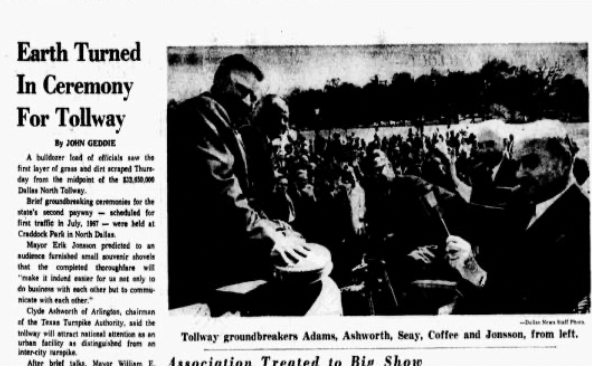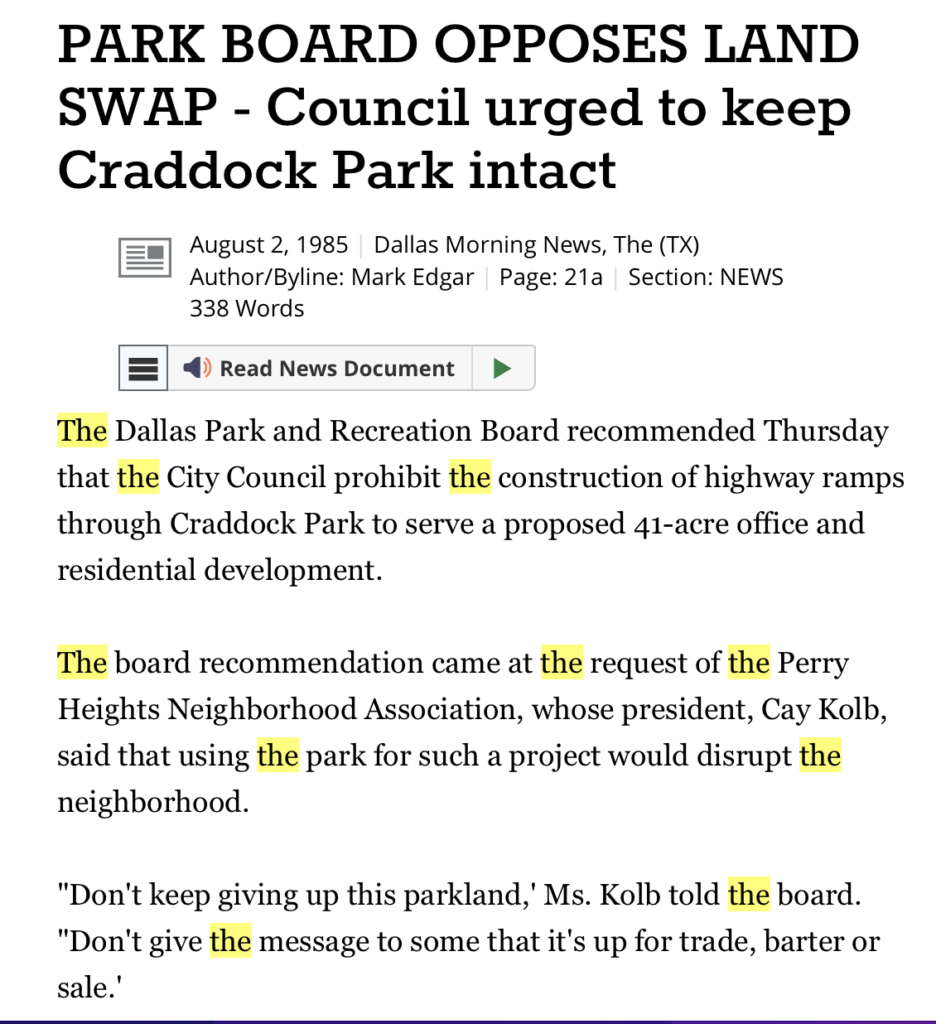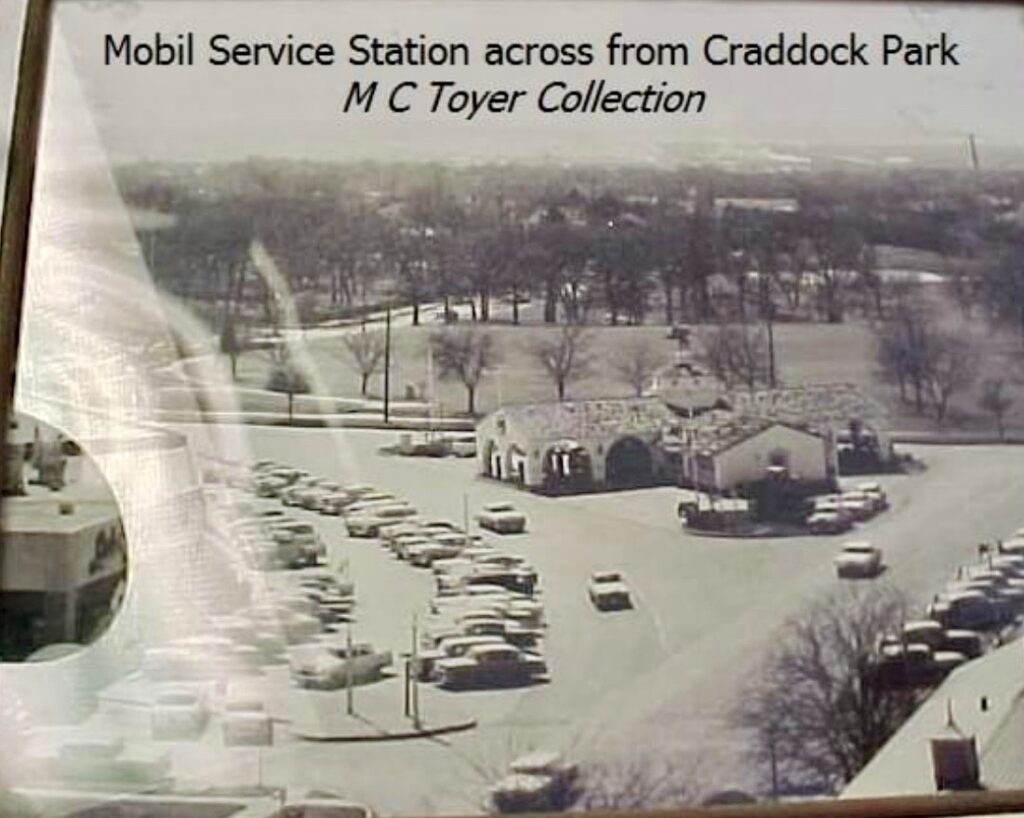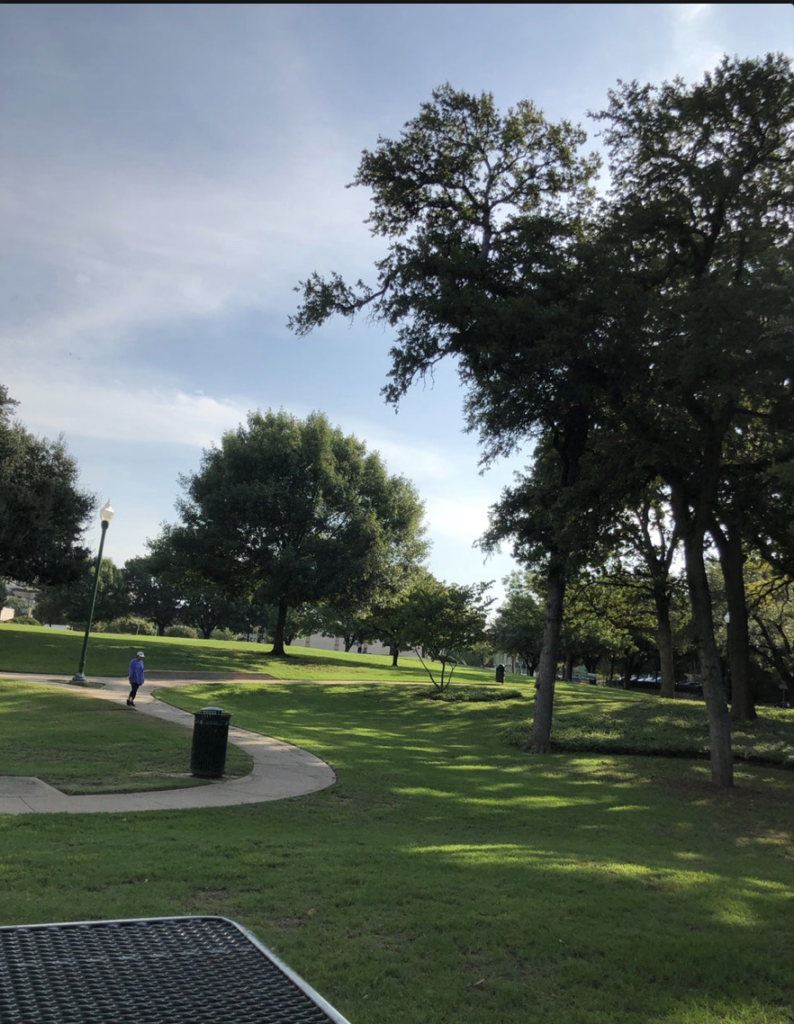
Our beautiful park, as you know, was donated to the City of Dallas by the Craddock family in 1922 when Gordon Perry platted Perry Heights. It was the first privately donated tract of land for the purpose of a public park in the City’s history. The land was just short of 10 acres and it was highly valuable. But what did Lemuel Craddock do to make all of his money? Who were the Craddocks?
Lemuel Craddock was born in Alabama in 1847, served in the Confederate army in 1864 and 1865, and moved to Dallas in 1875 where he opened a distribution business at Main and Austin Streets. He married Nanie Legg of Cleburne, Texas and had one son and two daughters.
So as we walk under the trees and breath some fresh air, which industry should we thank for this lush gift of a park? Oil, lumber, grocery stores, or maybe cotton? No, we should be thankful for liquor, specifically whiskey.
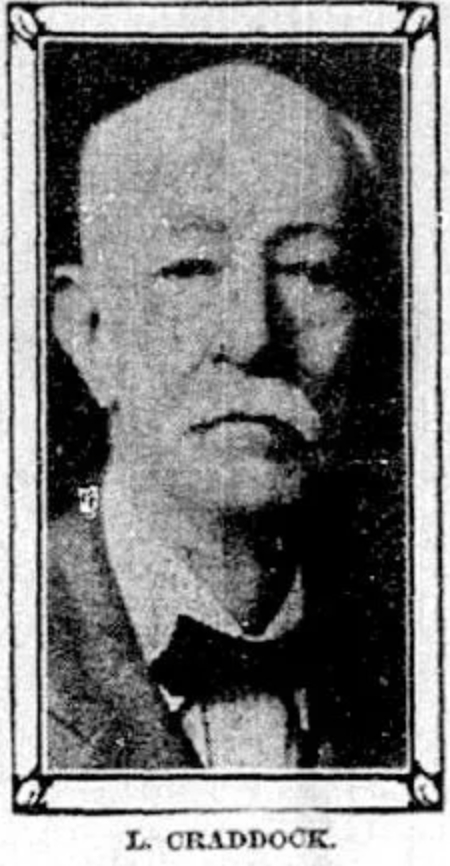
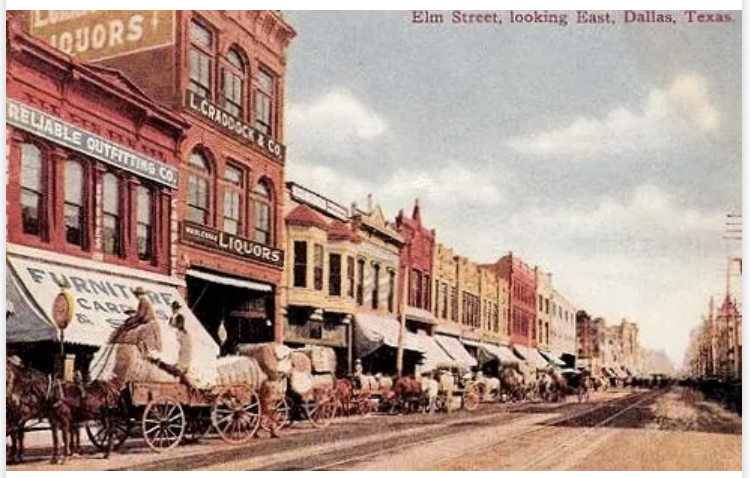
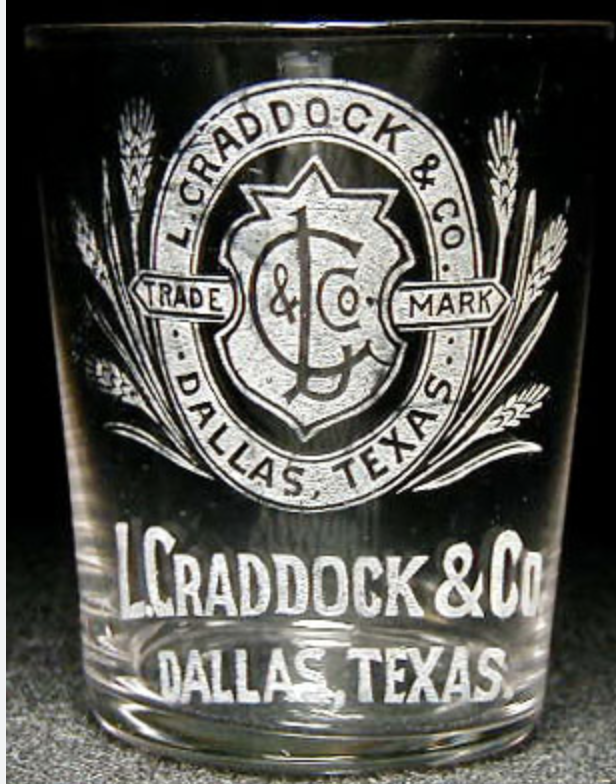
Craddocks Whiskey and Liquors was the largest direct to consumer shipper of whiskey in the South by the start of the 1900s. Craddock was well known for having the best whiskeys and Cuban cigars. Mr. Craddock was making massive amounts of money until one historical point in history arrived, Prohibition. He quickly sold off his inventory and retired to Denver, Colorado. He returned to Dallas often, including the visit he made to gift the park to the City. The one condition: it would be a public park. In 1922, the land was valued at about $90,000. Adjusting for inflation, that would be $1.6 million in today’s dollars, but it’s doubtful that it would sell for that little in today’s real estate market.
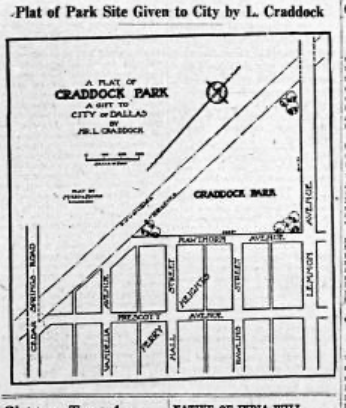
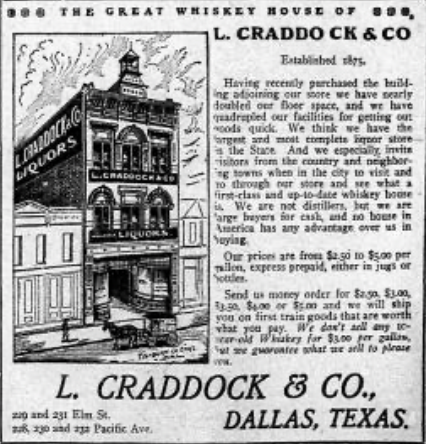
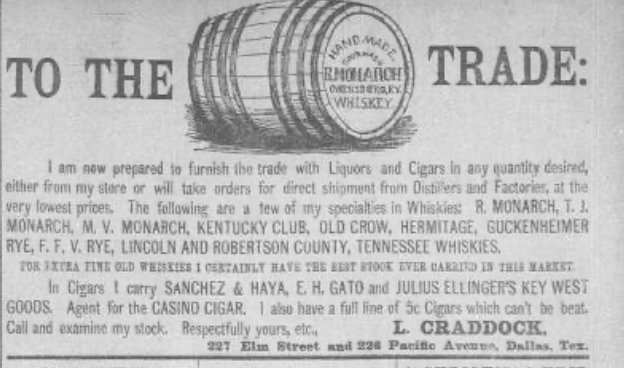
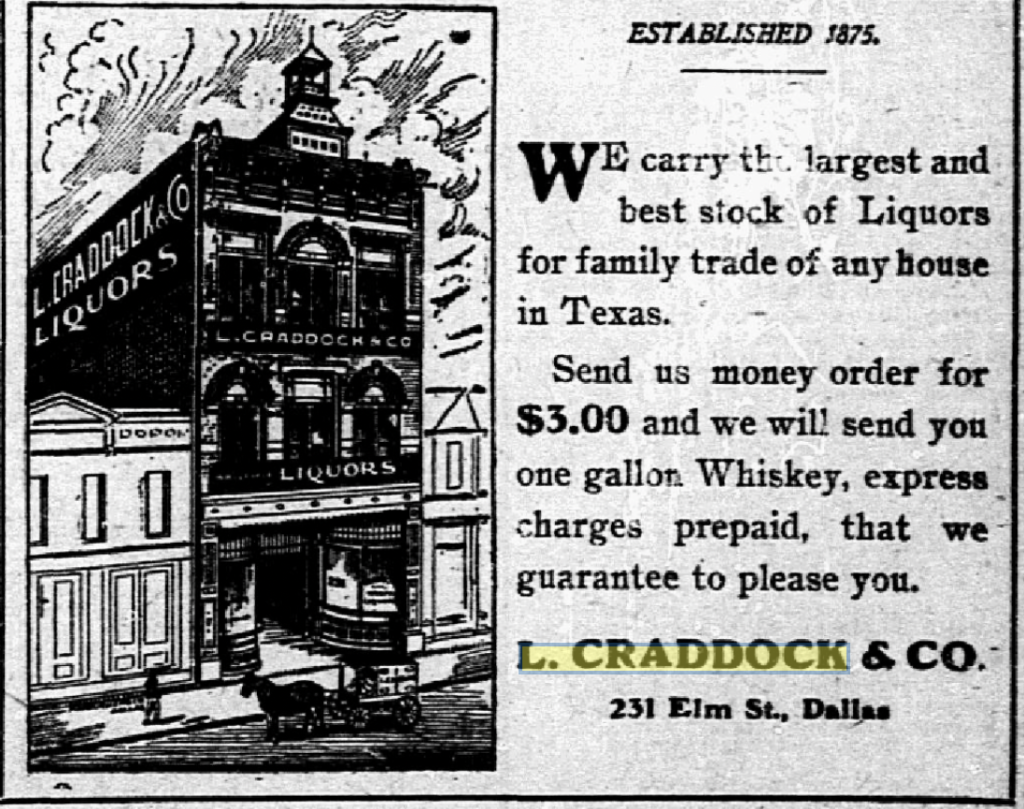
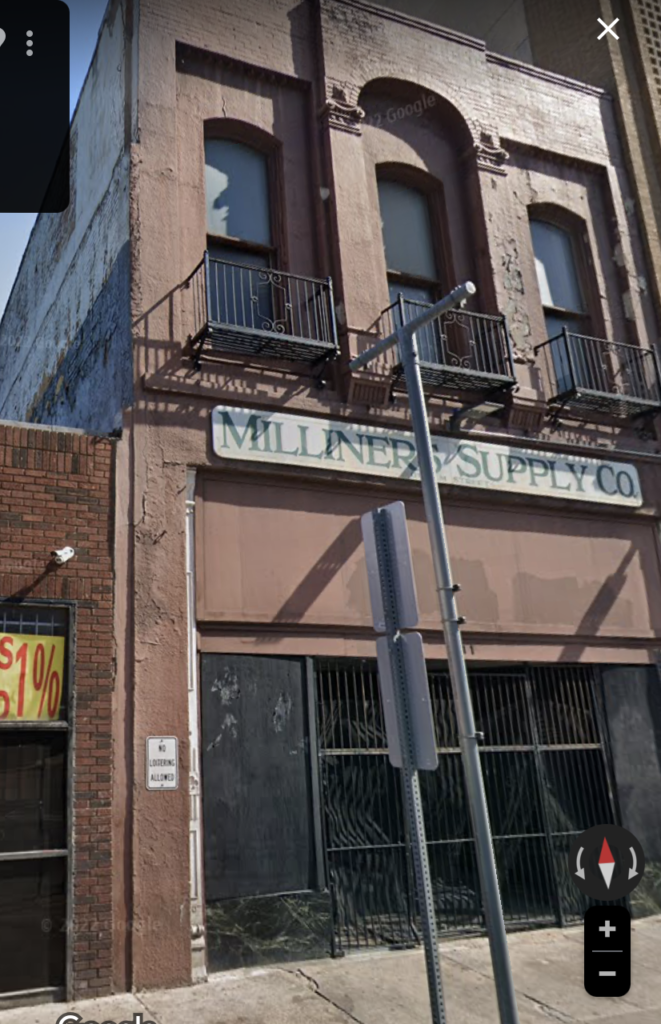
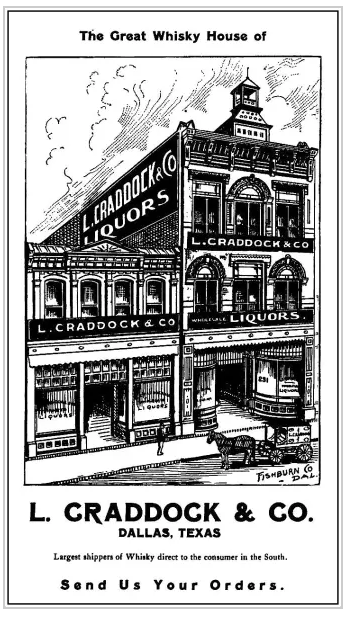
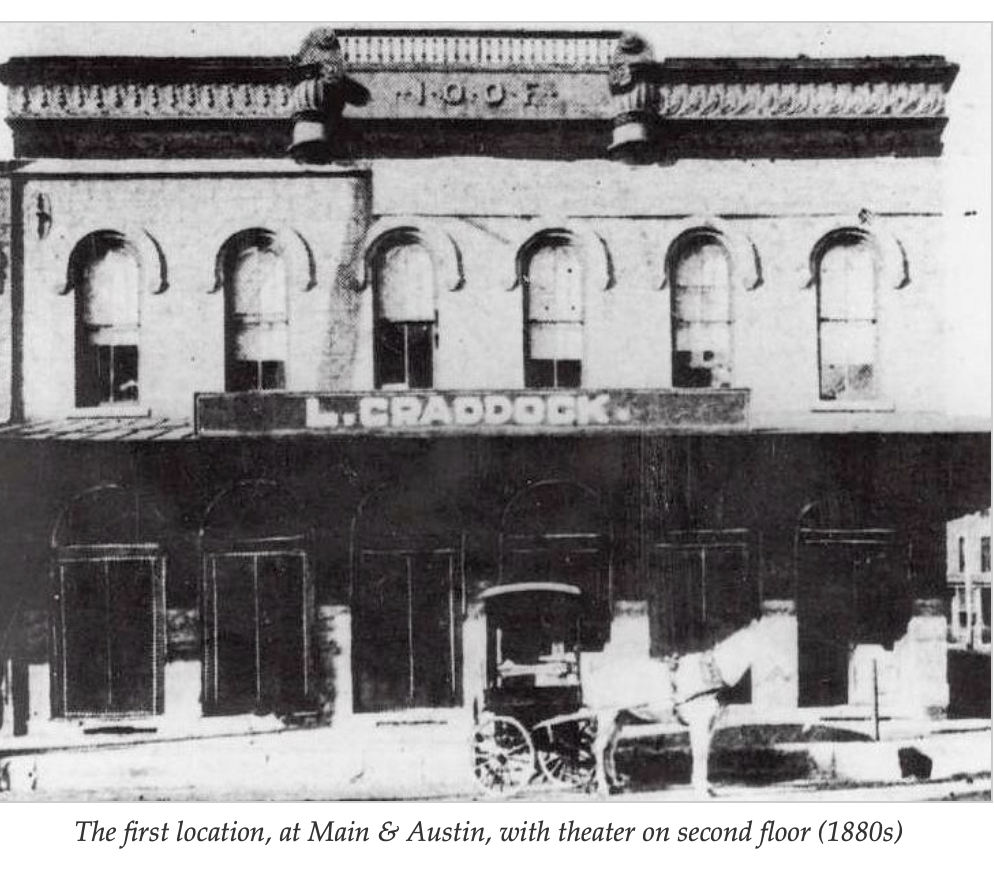
Mr. Craddock was a great Dallas philanthropist in many other ways. In addition to giving the parkland, he worked with other civic leaders to help establish the Texas State Fair at the current fairgrounds. He opened a theater on the second floor of his liquor business on Main Steet. The Dallas Opera used this space from 1878 to 1883. The opera house was rather primitive and only held 500 seats, yet it kept the company together to thrive and it brought international artists to the City. He was also a senior member of the Dallas Lodge of Odd Fellows, which is philanthropic club that is still active in Dallas today. He held a deep belief that he had a responsibility to improve the lives of others.
Around the turn of the century, Mr. Craddock moved the business to a larger building at 911 Elm St. This building still stands today. The name of one of the more recent owners, Milliniar’s Supply Company, is still painted on the front. Mr. Craddock’s turn-of-the-century home at Ervay and Cadiz St. has long since been torn down. After his first wife’s death, Mr. Craddock married Mattie Long in 1881 and then after he was widowed a second time he married Belle Christy Craddock. He died in 1933, three days before the repeal of Prohibition.
Mr. Craddock would be disappointed that his donated park would be threatened several times over the following 100 years. First, in 1966, the city built a tollway along the unused Cotton Belt Railway that ran behind Perry Heights and the park. Dallas North Tollway bought 91,881 square feet of the park to put in exit and entrance ramps. Dallas sold that land for $213,762. (In 1970, the City park board decided to hold some of this money, along with donations from other private businesses in a park fund totalling $200,000.)
In 1985, developer Harvey McLean had plans to build a small “city” on 41 acres near the corner of Lemmon Avenue and the Tollway that would have taken even more of Craddock Park for an additional exit ramp. Thankfully, Cay Kolb, a Perry Heights resident at the time, led the charge to have the plan rejected by the city.
The park has held many memories for nearby residents. They remember the formal rose garden from the 1940’s to the 1960’s, the baseball diamond, the playground with a merry-go-round, and the picnics. Some residents even chose to have their ashes spread in the park. It is up to our neighborhood to preserve and improve this gift of a park so future generations can enjoy this slice of nature and a place to walk and sit under the trees.

